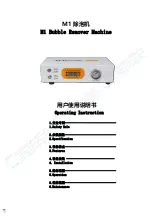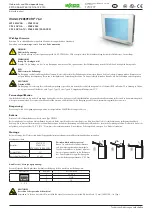
Digital Access Cross-Connect Switch (DACS)
A digital switching device for routing DS0s among multiple T1 ports.
Digital Terminating (or Terminal) Equipment (DTE)
DTEs provide the source of the transmitted digital signal and the
destination for the received digital signal. DTEs includes multiplex-
ers, PBXs, T1 channel banks, front-end processors, computers, termi-
nals, and LAN routers.
DS0
Digital signal level 0 is the worldwide standard transmission rate (64
kbps) for PCM digitized voice channels. 24 DS0s exist in each DS1
(T1) signal.
DS0 Bundling
The process of assigning data to specific DS0s for transmission
through a T1 network.
DS0 Map
A DS0 map is a representation of a bundling configuration.
DS1
See T1
DTE Port
A subrate interface between a DTE and an Access-T.
Errored Second (ES)
In ESF mode, a second containing one or more CRC-6 errors or an
Out-of-Frame (OOF) condition. This parameter is defined for the ESF
mode in AT&T Publication 54016. In D4 mode, Access-T registers an
ES as a second containing one or more BPVs or an Out-of-Frame
(OOF) condition. In either framing mode, ES are not counted while
Unavailable Signal State is in effect. (See Figure B-1.)
ESF Error
An ESF Error is registered when an Extended Superframe contains
an OOF event or CRC-6 error.
Extended Superframe (ESF)
An Extended Superframe consists of 24 frames of 193 bits each (4632
bits total). In each frame, one “F bit” is followed by 24 8-bit bytes. The
8 kbps of F-bit overhead is divided into 2 kbps for framing, 2 kbps of
CRC-6 code for logic error checking, and a 4 kbps Data Link for
maintenance communications. As in the Superframe (D4) format,
1.536 Mbps is the available bandwidth for user information.
ACST-0351-005
Appendix B
June 1996
Glossary
B-5
















































